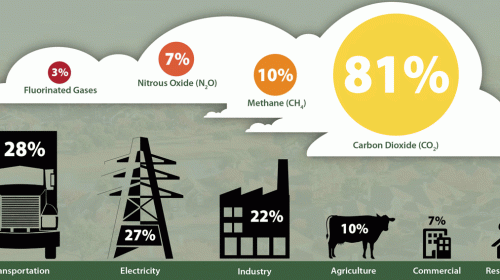Sources: U.S. Environmental Protection Agency; CP staff
A just-released EPA report shows the United States continuing to cut greenhouse gas (GHG) emissions disproportionate to economic output: 2018 levels were down 10 percent compared to 2005, while the economy grew 25 percent over that 13-year span.
Inventory of U.S. Greenhouse Gas Emissions and Sinks: 1990–2018″ shows cement production—the most visible aspect of new-construction activity in national GHG figures—contributing 40.3 million of the 5.4 billion metric tons, or 7.5 percent, of carbon dioxide generated in 2018. Cement joins Iron & Steel, Petrochemical, Ammonia and Lime Production in the top five GHG sources reported in the EPA Inventory’s Industrial Processes and Product Use (IPPU) chapter. IPPU emissions fall within Industry End-Use, which accounts for 22 percent of GHG emissions in the 2018 Inventory, behind Transportation and Electricity (28 percent, 27 percent) and ahead of Agriculture, Residential and Commercial (≤ 10 percent).
The report “highlights declining emissions trends since 2005, showing that the U.S. is reducing GHG emissions while still being able to grow a robust economy,” says EPA Administrator Andrew Wheeler. “While there was a small rise in emissions due to weather and increased energy demand from the prior year, based on preliminary data, we expect next year’s report to show that the long-term downward trend will continue.”
